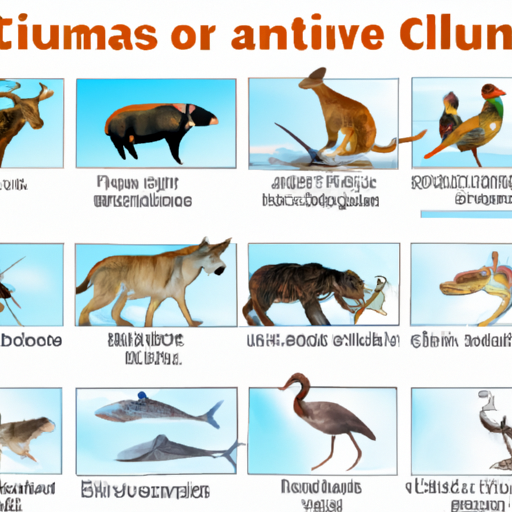 Introduction:
Introduction:
Climate change, driven by human-induced greenhouse gas emissions, has emerged as one of the most pressing global challenges of our time. Beyond the immediate threats to human well-being, the adverse effects of climate change are wreaking havoc on Earth’s delicate ecosystems, profoundly impacting its diverse animal species. This article aims to shed light on the intricate web of connections between climate change and the animal kingdom, exploring the devastating consequences for wildlife populations, habitats, and ecological balance.
1. Disrupted Migration Patterns:
Climate change disrupts the delicate balance of seasonal variations, altering migratory patterns of numerous animal species. Birds, for instance, rely on specific climatic cues to navigate vast distances during their annual migrations. As temperatures shift and habitats change, disruptions in food availability and nesting sites lead to reduced breeding success, population decline, and even local extinctions.
2. Shifting Habitats:
Rapid temperature changes are forcing animals to migrate or adapt to new environments, often disrupting entire ecosystems. Polar bears, emblematic of the Arctic, rely on sea ice as a hunting platform. With the decline in Arctic sea ice, these magnificent creatures face increased competition for limited resources, reduced access to prey, and heightened risk of extinction.
3. Altered Reproduction and Breeding Patterns:
Climate change disrupts the delicate timing of reproductive cycles, impacting the survival of numerous species. Turtles, for instance, rely on specific temperature thresholds for egg incubation. Increased temperatures lead to skewed sex ratios, with more females being produced, reducing genetic diversity and ultimately threatening population viability.
4. Coral Bleaching and Ocean Acidification:
Rising global temperatures cause oceanic heatwaves, leading to the phenomenon known as coral bleaching. This devastating process results in the expulsion of symbiotic algae from coral, depriving them of essential nutrients and color. Consequently, coral reefs, the “rainforests of the sea,” face widespread decline, jeopardizing the intricate ecosystems they support and the countless marine species that depend on them.
5. Extinction Risk:
Climate change exacerbates the already alarming rates of species extinction. The International Union for Conservation of Nature (IUCN) estimates that approximately one million species face extinction in the coming decades, largely due to habitat loss, changing ecosystems, and increased vulnerability to diseases and predators. Iconic species such as the African elephant, Bengal tiger, and orangutan are all under significant threat from climate change.
6. Disease Transmission:
Climate change influences the distribution and abundance of disease vectors, such as mosquitoes and ticks, expanding their range and increasing the likelihood of disease transmission. For example, the prevalence of vector-borne diseases like malaria, dengue fever, and Lyme disease is rising, posing significant threats to both humans and wildlife populations.
7. Disrupted Food Chains:
Climate change disrupts the intricate web of food chains, impacting predator-prey dynamics and overall ecological balance. For instance, as warming temperatures reduce the abundance of plankton, the primary food source for many marine organisms, the cascading effects can lead to reduced fish populations, affecting both marine life and human communities reliant on fisheries for sustenance and livelihoods.
Conclusion:
The detrimental consequences of climate change on the animal kingdom are vast and far-reaching. The intricate relationships between species, ecosystems, and climatic factors are being disrupted at an alarming rate, threatening countless species with extinction and destabilizing the delicate balance of nature. Urgent global action is necessary to mitigate climate change, reduce greenhouse gas emissions, preserve vital habitats, and protect the diverse array of animals that share our planet. Only through collective effort and conscious decision-making can we hope to preserve Earth’s natural wonders for future generations and secure a sustainable future for all living beings.
